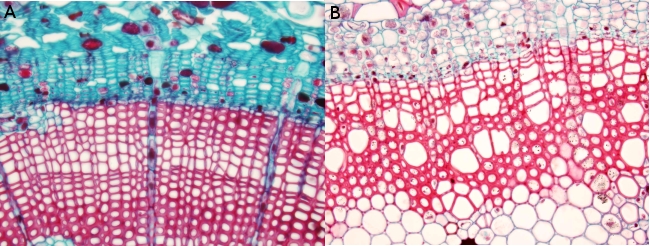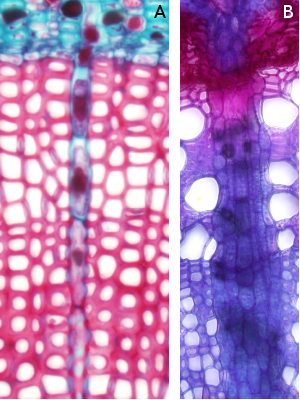Plant tissues. Vascular.
SECONDARY
XYLEM and PHLOEM

Species: A: pine (Pinus spp); B: elderberry (Sambucus nigra)
Technique: paraffin embedding, section stained with Alcian blue / safranin.
In plants with secondary growth, fascicular cambium differentiates in vascular cambium giving secondary phloem outward and secondary xylem inward. Cells of secondary xylem and secondary phloem are mainly oriented vertically (parallel to the main axis of the organ), except for a group of parenchyma cells that are arranged horizontally to form the axial rays. Secondary growth is typical of dicotyledon plants and gymnosperms. These two groups of plants can be distinguished by the different features of their secondary xylem.

In gymnosperms (figure A, above), secondary xylem is composed of tracheids as the only conductive element. Conifers, such as pines, are trees with the so the called softwood because they lack sclerenchyma fibers in their xylem. Most tracheids show areolate pits to communicate with neighboring cells. In dicotyledon plants (figure B, above), vessel elements are the main conducting cells, although sclerenchyma fibers are also found among the vessel elements. Parenchyma cells forms the horizontal parenchyma that it is organized as axial rays, which are uniseriate rows of cells in gymnosperms and multiseriate rows of cells in dicotyledon plants (see figure on the right).
In the secondary phloem, sieve tubes are not easily distinguished from companion cells, and horizontal parenchyma cells are difficult to be distinguished too, because phloem cells become tight and form compact groups. That is why, in the figure above, we enclose the pºhloem altogether, without labelling the cells.
